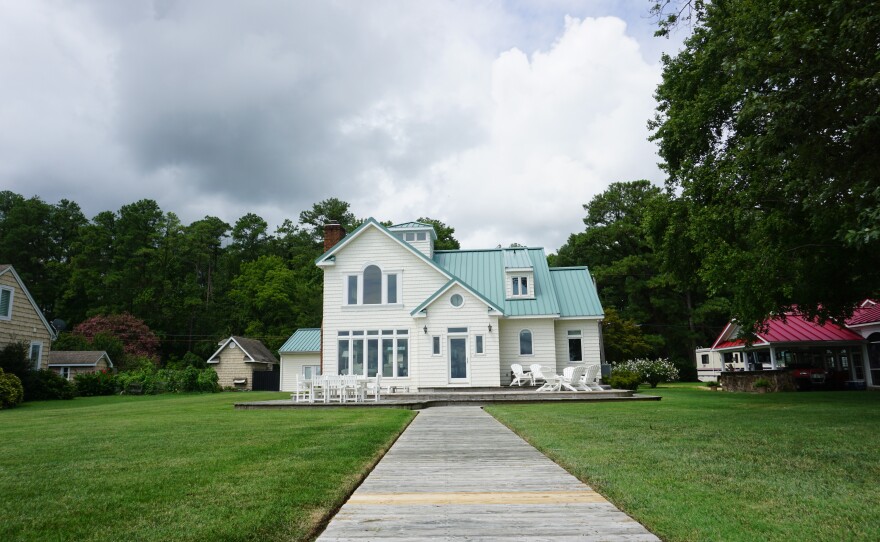This summer, tornados and intense rains have devastated some of Virginia’s tiny communities from the Atlantic Coast to mountain valleys.
The Federal Emergency Management Agency or FEMA will be increasing flood insurance premiums next year.
Homeowners are facing emotional decisions, some with hefty price tags, to adapt to the changing climate.
One option is to go high.
Back in the day, city dwellers from Washington D.C. to Richmond, would escape the heat to a river house. Many built cottages along the Chesapeake Bay and its tributaries in the Northern Neck and Middle Peninsula of Virginia. They still come to boat, fish, jet ski and go to local restaurants and shops, injecting much needed cash into the rural communities here.

There is a saying, “if you’re lucky enough to live by the water, you’re lucky enough.” Just ask Adair Wallerstein, a young Richmond professional. "My parents purchased their river house before I was born and I’ve grown up down here on the Rappahannock River. For 28 years we’ve been coming down here."
As she talks, workers are raising her house nine feet. Over the years, many of the rustic old cottages along the Rappahannock have been replaced by bigger ones that are elevated above the floodplain. The neighborhood waterfront is armored with bulkheading and other barriers in an effort to keep the water back. Homes overlook a deep, wide part of the river not far from the Chesapeake Bay. Barges glide by loaded with grain.
Just two doors down from Wallerstein, are Teresa Moore and her husband Floyd. Like Wallerstein, she grew up vacationing here. A real estate agent, her love of the place sounds like a pitch, but she echoes homeowners throughout the Tidewater. "I mean we have the most spectacular location ever. Seriously, and I’m not exaggerating."

In these low-lying Essex County neighborhoods of Shellfield and Fort Lowry, rain-puddled roads divide swamp from houses that line the river on the opposite side. Some so close, their docks are at their door. Ask anyone lucky enough to live here and they’ll tell you at least one storm story. The yardstick storm they measure by is 2003’s Hurricane Isabel. Moore moved here nine months before Isabel. She remembers the night before the storm struck when she and her husband were evacuating and a local farmer stopped them. His yardstick Hurricane Hazel in 1954. "He said, 'I’m telling you, we’re gonna get this one.' So, Floyd and I are driving back in the pickup truck and we didn’t say a word. I’ll never forget this, we never said a word." After pausing with emotion, Moore added "it was devastating.”
Most stayed. But the elderly couple in the house between the Moores and Wallersteins never returned. They sold to someone else “lucky enough” to be there despite the flood risk. Ernesto, Sandy, Matthew came, with damaging nor’easters in between. Some neighbors used insurance money to raise their homes, others turned to FEMA. It took three years before the Moores, Wallersteins and two other neighbors received a FEMA grant to elevate their houses. Each will pay 25% of the cost, FEMA pays the rest. With costs running into a hundred thousand dollars, it’s not cheap. They describe the grant process as long and grueling.
But all are determined to stay. And more keep coming. "I’ve got realtors that are very good friends of mine on the Northern Neck that have made it through times where second homes were not being sold and they have 7-12 deals in a week," Teresa Moore said.
Surging Seas Risk Finder from Climate Central
In the next report we look at Central Shenandoah Valley, hit by a deluge of floods this summer.
This report, provided by Virginia Public Radio, was made possible with support from the Virginia Education Association.






